Tracing back the true inventor of the violin – Who is he?
2017-10-29



 Uncategorized
Uncategorized
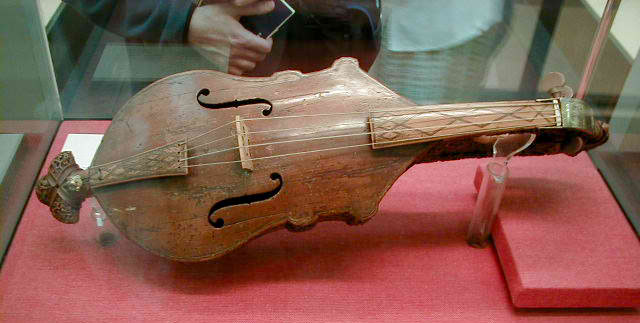
Listening to the music produced by a violin is fascinating and soothing to the soul. It has an exciting and unique sound that makes it different from other instruments. It is one of the most significant instruments in the orchestra.

Early Violin
The rich history of the violin makes things complicated when it comes to deciphering the exact origin of the instrument. Experts and scholars are still debating today on who’s the first creator of the first creator of the instrument. So we need to find all the information we need to find the inventor of the violin. As we are digging some information, we’ve found out that more documents are pointing to the place where the violin came from rather than the creator of the violin. With regards to that, perhaps we can trace the origin of the first violin maker by locating where the instrument started. Italy was the place to start the investigation. There are more historical documents that point to Italy as the place where the violin began to come out. The first part of the 16th century was the time where violins start to emerge as musical instruments.
Is it Andrea Amati?
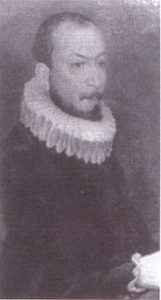
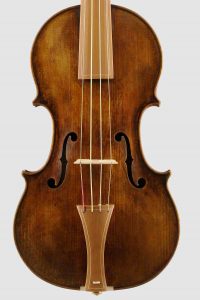 Since the first violin was found in the early 16th century, the only prominent luthier during that time is Andrea Amati. This is probably one of the reasons why historical scholars believed that it was Amati who first created the violin. However, to think that Amati invented the violin was uncertain. That is why it is safe to say that Amati was the first documented violin maker known throughout history. According to the historians, they have collected two documents that provide them a discovery that points them to the existence of the first violins. The text infers that these violins were created from 1542 to 1546.
Since the first violin was found in the early 16th century, the only prominent luthier during that time is Andrea Amati. This is probably one of the reasons why historical scholars believed that it was Amati who first created the violin. However, to think that Amati invented the violin was uncertain. That is why it is safe to say that Amati was the first documented violin maker known throughout history. According to the historians, they have collected two documents that provide them a discovery that points them to the existence of the first violins. The text infers that these violins were created from 1542 to 1546.
The violins created by Amati still exist today. They have survived and were even in use by some notable violin players. 38 violins survived which dates back 1564. They were brought together with other musical instruments which were sent to Charles IX of France. The only difference is that these violins do not look the same with the violins that we have today. The instrument was smaller, with higher arches, the edges are wider with more decorative markings and numerous curves scrolls all over its body. So what we considered as standard violin size today was not from Amati but Antonio Stradivari. You will read more about him later.
How about Gasparo da Salo?
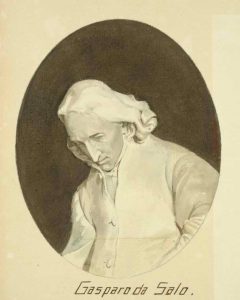
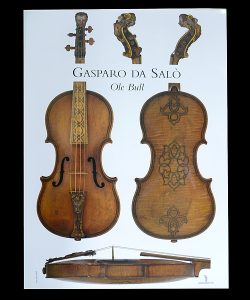 Even though Amati was considered as the first known inventor of violin, not all scholars believed in that. Their argument for that is that Amati was only a lute maker, so he was inexperienced when it comes to creating violins. They have their eyes on Gasparo da Salo of Brescia as the first violin maker, but just like Amati, the documents and pieces of evidence were not sufficient to consider da Salo as the inventor of the violin.
Even though Amati was considered as the first known inventor of violin, not all scholars believed in that. Their argument for that is that Amati was only a lute maker, so he was inexperienced when it comes to creating violins. They have their eyes on Gasparo da Salo of Brescia as the first violin maker, but just like Amati, the documents and pieces of evidence were not sufficient to consider da Salo as the inventor of the violin.
U ndoubtedly the violin is very addictive to listen once you hear its soothing and distinct sound. Perhaps this is one big reason why violins are in-demand to different parts of the world. Composers place violin as the primary musical instrument on their compositions. The result makes the demand for violins goes higher to various parts of the world. Mass production began to spread around the world were some tagged the names of famous violin makers even though they are not authentic. Unfortunately, it was still being practiced till today. The good thing is that Amati’s creations left a legacy that echoes throughout generations, making the violin instrument more and more popular around the world. It becomes one of the most essential and permanent parts of orchestras today.
ndoubtedly the violin is very addictive to listen once you hear its soothing and distinct sound. Perhaps this is one big reason why violins are in-demand to different parts of the world. Composers place violin as the primary musical instrument on their compositions. The result makes the demand for violins goes higher to various parts of the world. Mass production began to spread around the world were some tagged the names of famous violin makers even though they are not authentic. Unfortunately, it was still being practiced till today. The good thing is that Amati’s creations left a legacy that echoes throughout generations, making the violin instrument more and more popular around the world. It becomes one of the most essential and permanent parts of orchestras today.
The argument concerning Amati as the inventor
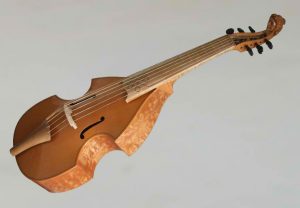
Viol

Lute
Evaluating the facts regarding who is the inventor of violin, we can see that Andrea Amati is the closest one. Because Amati’s birthplace was in Cremona, Italy and that he lived from 1505 up to 1577. The dates mentioned gets into the period where they discovered the first violins.
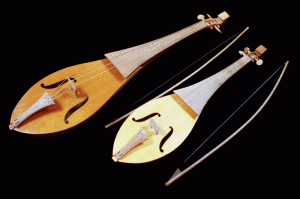
Rebecs
Added to that he was a luthier at that time. A luthier is an expert craftsman who makes stringed instruments. The instruments he created such as viols, rebecs, and lutes have similar features and representation of the early violins that were discovered. It is quite evident that the early violins and the modern violins have identical patterns in shape, features, and characteristics of these particular instruments. Therefore, the possibility that Amati is the inventor of the violin is higher than other luthiers during that specific period.
The lineage and legacy of Amati
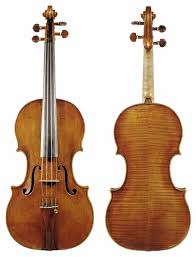
Brothers Amati Violin

Nicola Amati
After Amati died on December 16, 1577, he left his legacy of creating musical instruments to his children who later become one of the world’s best violin makers. The two sons of Amati, Antonius or “Antonio” and Hieronymus or “Girolamo” inherited Amati’s passion for making violins. They were half-brothers who later were known as “The Brothers Amati” a famous label for their products. However, even though their name seems to look like collaboration, but they created their instruments separately.
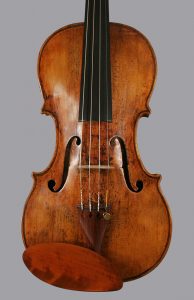
Nicola Amati’s 1745 Violin
Hieronymus Amati has a son named Nicola also known as Nicolaus or Nicolo who later continued the legacy of his father. He was born in 1596 and then crafted the most exquisite masterpieces ever created in the history of his family. He died in 1864, but the influence of his creation continues.
What about the famous Antonio Stradivari?
Undeniably Antonio Stradivari’s creations are one of the most popular and expensive lines of violins today. His significant contribution in the history of violin making cannot be overlooked by anyone especially those who are aspiring to become professional violinists someday. The popularity of his creations echoes from generation to generation that it was even mentioned on one of the novels of Sir Arthur Conan Doyle.
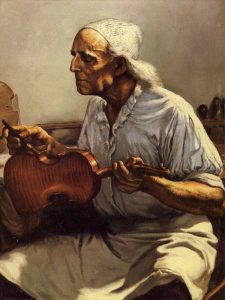 Stradivari was presumed to be born somewhere between the years 1644 to 1649. Even though Stradivari was not one of those that were considered the inventor of violin, he was under the tutelage of the grandson of Andrea Amati who is Nicola Amati. He then became a faithful Apprentice. So the remarkable skill and knowledge of Stradivari in creating violins was passed by the grandson of the first known inventor. Stradivari’s talent in craftsmanship later developed his expertise and was able to create violins that became the standard for violin makers today. Only famous and award-winning violinists from the past up to the present have played and used his violins. His violins were not only renowned among notable musicians but were also one of the most expensive musical instruments in the world. The mark of Amati’s influence is etched on the long line of Stradivari’s creations.
Stradivari was presumed to be born somewhere between the years 1644 to 1649. Even though Stradivari was not one of those that were considered the inventor of violin, he was under the tutelage of the grandson of Andrea Amati who is Nicola Amati. He then became a faithful Apprentice. So the remarkable skill and knowledge of Stradivari in creating violins was passed by the grandson of the first known inventor. Stradivari’s talent in craftsmanship later developed his expertise and was able to create violins that became the standard for violin makers today. Only famous and award-winning violinists from the past up to the present have played and used his violins. His violins were not only renowned among notable musicians but were also one of the most expensive musical instruments in the world. The mark of Amati’s influence is etched on the long line of Stradivari’s creations.
 But that’s not all. The extent of Stradivari’s remarkable craftsmanship is broad allowing him to create other musical instruments such as cello, mandolins, guitar, harps, and viola. All of them were great in sound and quality. Stradivari creations reached for more than a thousand. Unfortunately, not all of them survived, but we are fortunate to have most of them today.
But that’s not all. The extent of Stradivari’s remarkable craftsmanship is broad allowing him to create other musical instruments such as cello, mandolins, guitar, harps, and viola. All of them were great in sound and quality. Stradivari creations reached for more than a thousand. Unfortunately, not all of them survived, but we are fortunate to have most of them today.
Stradivari did not have a smooth start in his career. He experienced lots of failures and disappointments as he develops his modifications and experiments until he finally perfected his designs and crafts. As a result, the designs and features he produced on his violin creation became the world’s standard for modern-day violins. His creations exceeded those of Amati’s regarding the strength in tone.
Conclusions
The influence of the Amati’s is shown in Stradivari’s remarkable handicrafts. We may not solve the issue regarding who’s the real inventor of the violin, but we have traced the roots from where the designs and features of the violin came from. Andrea Amati may not be the actual inventor of the violin due to lack of complete pieces of evidence and documents, but we can see his influence on features and designs passed through many generations until today. Thanks to Andrea Amati, he is indeed the worlds “known” inventor of the violin.

Leave a Comment